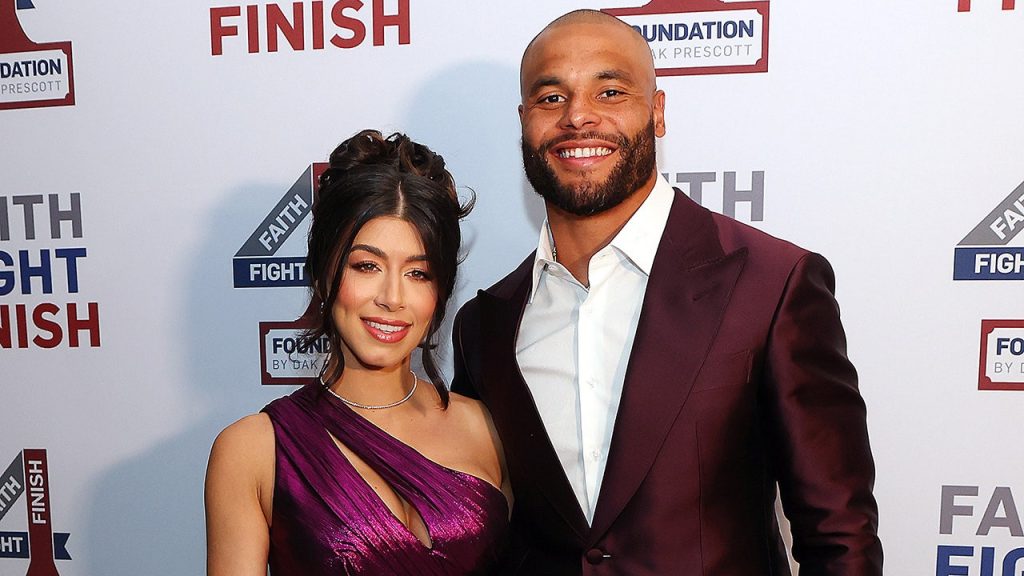The world of professional sports has recently been plagued by a wave of burglaries targeting high-profile athletes, raising concerns about security and privacy in the lives of these public figures. The latest incidents involve Dallas-based athletes, including Dallas Mavericks star Luka Doncic and the fianceé of Dallas Cowboys quarterback Dak Prescott, Sarah Ramos. Ramos reported nearly $40,000 worth of luxury goods stolen from her unlocked car after a Pilates class, while Doncic’s home was burglarized, with thieves making off with jewelry valued at over $20,000. These incidents follow a disturbing trend of similar burglaries targeting athletes across various sports, highlighting the vulnerability of these individuals despite their wealth and fame.
The string of burglaries targeting athletes extends beyond Dallas. Kansas City Chiefs stars Patrick Mahomes and Travis Kelce both fell victim to home burglaries in the past month, and Cincinnati Bengals quarterback Joe Burrow also experienced a similar incident. The frequency and seemingly targeted nature of these crimes have prompted the NFL to issue a league-wide memo warning players about the escalating threat. This memo, obtained by the Associated Press, reveals a growing concern about “organized and skilled groups” specifically targeting professional athletes for burglaries.
The NFL’s security alert underscores the sophisticated nature of these crimes. Reports indicate that the perpetrators conduct extensive surveillance on their targets, often posing as groundskeepers, joggers, or even delivery personnel to gain access to properties. This level of premeditation and organization distinguishes these burglaries from opportunistic crimes, suggesting a calculated effort to exploit the predictable schedules and public visibility of athletes. The FBI’s involvement, as reported by NFL Network, further emphasizes the seriousness of the situation and the potential link to a larger criminal network, possibly a South American crime syndicate.
The NFL’s memo outlines a series of precautions for players to enhance their security. These recommendations include installing robust home security systems, refraining from posting real-time updates of their whereabouts on social media, and avoiding showcasing expensive possessions online. These measures aim to deter potential burglars by minimizing opportunities and reducing the visibility of athletes as easy targets. The memo also serves as a reminder of the importance of vigilance and personal security practices, even for individuals living in seemingly secure environments.
The targeting of athletes raises important questions about the balance between public image and personal safety in the digital age. While social media platforms provide athletes with a direct connection to their fans and opportunities for self-promotion, they also create vulnerabilities by revealing personal information and daily routines. The incidents involving Doncic, Ramos, and other athletes demonstrate the potential consequences of oversharing online, particularly when it comes to displaying valuable possessions and revealing location information. The need for discretion and careful consideration of online activity is paramount in mitigating the risks associated with public exposure.
The recent spate of burglaries targeting athletes serves as a stark reminder of the security challenges faced by high-profile individuals. The organized nature of these crimes, coupled with the increasing sophistication of surveillance techniques employed by perpetrators, necessitates proactive measures to protect athletes from becoming victims. The NFL’s memo, the FBI’s involvement, and the individual experiences of athletes like Doncic and Ramos underscore the need for heightened vigilance, both from the athletes themselves and from law enforcement agencies working to combat these targeted crimes. The ongoing investigations and security measures implemented in response to these incidents will be crucial in deterring future burglaries and ensuring the safety and privacy of athletes in the face of these evolving threats.

